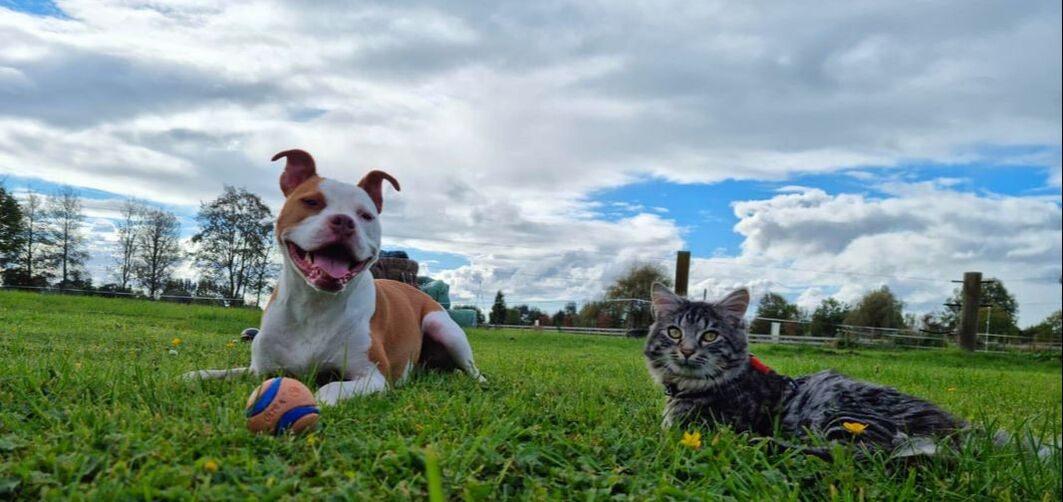|
We’ve all seen the idealistic relationships around. A huge Great Dane spooning the smallest little foster kitten, or a big fluffy Maine Coone rolling around in the sun next to their panting, colour matched dog-mate.
Interspecies relationships tickle the heart in a way that can’t really be described. It’s unfortunate that, as is the trend of many things we see online, this creates an ideal that every person believes is attainable… Predator Vs. Prey If we get into the nitty gritty of it, a dog is a predator animal, and a cat falls pretty squarely into a prey level. Instinctive behaviours from both species are ingrained into each animal and that needs to be taken into consideration when having them in the same household. This also relates to any interspecies relationships in the home, but today we are focusing on the cat/dog type. It is unrealistic to expect that a cat and a dog will automatically just get along. You get the odd feline who can stroll up to any dog, wind around their legs– or in other cases, square up and whack them on the nose. The majority of cats will turn high tail and run away, however, and this is a recipe for any dog to see that movement, have their prey drive be activated and immediately take off after. It’s all about the introductions and management at the beginning, to set both animals up for success. The Aim The ideal situation for any multi-animal space is that there is neither too much excitement about each other’s presence, nor fear. We want both animals to ignore each other. This might seem a bit bleak when the start of this blog talked about the lovey-dovey, best mate situations, but you have to remember: those are the anomalies! A dog and cat existing peacefully together is actually above and beyond what nature sets out for them. The Intros This is where we have to think ahead. If you have a puppy, and you’re introducing it into a home with cats, you have the ability to socialise your puppy to their existence without too much prey drive present (if they’re under 16 weeks of age). In this period of socialisation, careful, monitored introductions will teach the puppy that your cat is a part of their daily life and nothing to think twice about. If you are at a point where an adult dog needs to get used to a cat, there are few more things you have to do. Some breeds, like collies, shepherds, retrievers or terriers, will be more predisposed to have interest in the small fluffy things, so it’s really important to keep that in mind. You cannot remove what is in their genetics, but you can channel and control that with catered activities and obedience. But it’s not all about Fido! Tom needs to be able to feel safe and comfortable as well.
Basically, it’s about taking it slow. You’re not going to plop your dog right in front of your cat and cross your fingers. There are more detailed steps you can follow to make sure these introductions are successful, but every household situation is unique, and it is not often a blanket approach to ensuring everything goes smoothly. Make sure to get in touch with a professional trainer if you need help with guiding you through these intros. SOME MORE TIPS Do NOT hold your cat. This can make your cat feel trapped, and your dog will think they have back up if they also want to grab the cat. Crating or tethering your dog to a solid piece of furniture is a very secure way of keeping your dog safe from your cat. While your dog can still intimidate from that space, it gives your cat ample time to escape or relax, depending on your dog’s demeanour. It must be on the cat’s terms to approach, not the dog’s. Make sure the dog is relaxed if your cat wants to come closer. A spooked cat can run, and that is what will create the excitement we don’t want in their interactions. Don’t rush it. Don’t force it. Multi-animal households are a lovely mix of energies and experiences, if you do it right. But management, planning, and realistic expectations are what will help bring that kind of peace, not pretending our animals are something they are not.
0 Comments
Leave a Reply. |
AuthorsArticles created by the team at Allsorts Dog Training, Bay of Plenty, New Zealand Our Library
All
|


 RSS Feed
RSS Feed